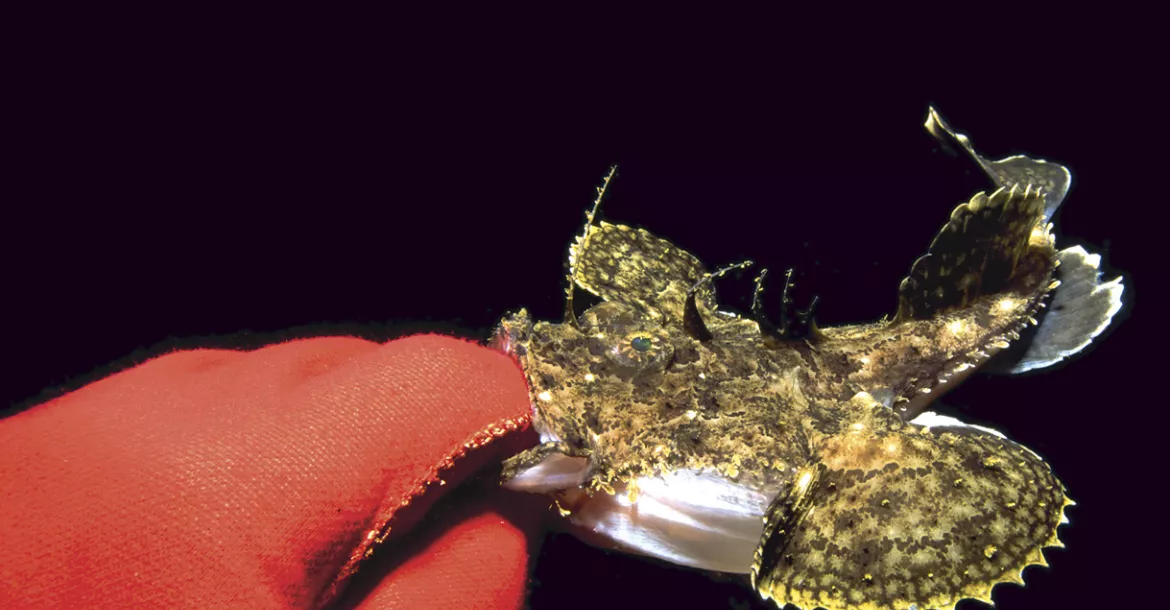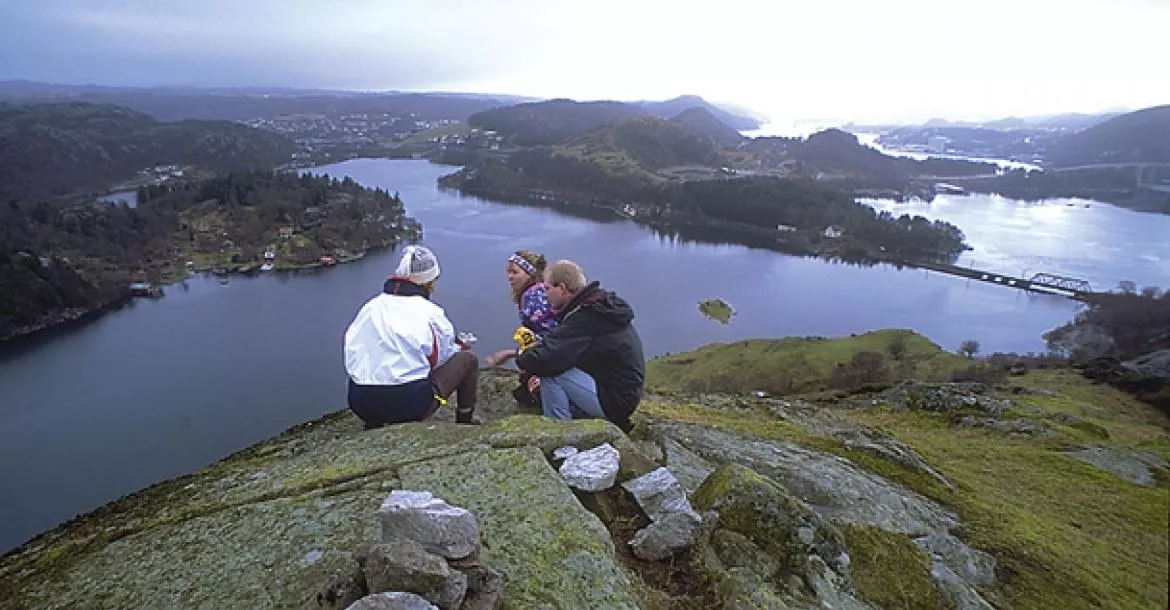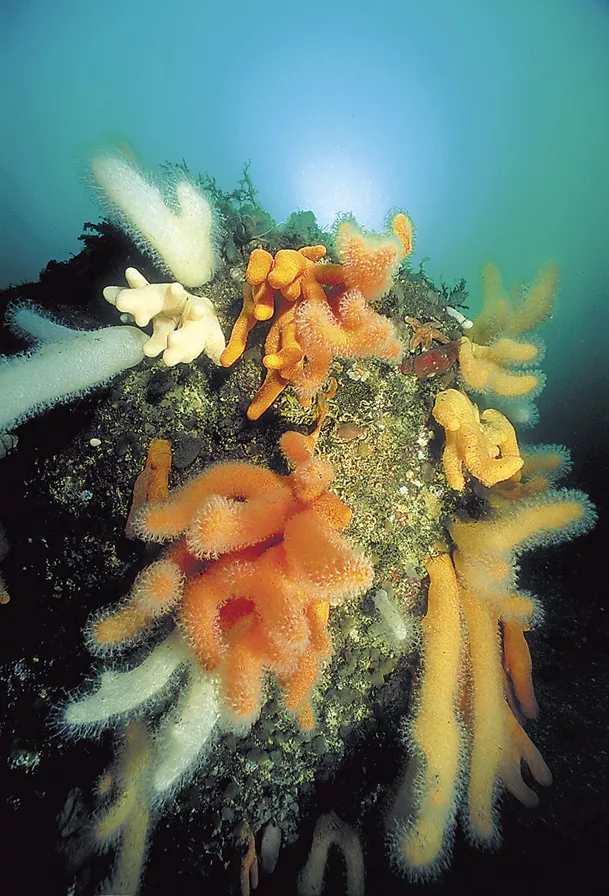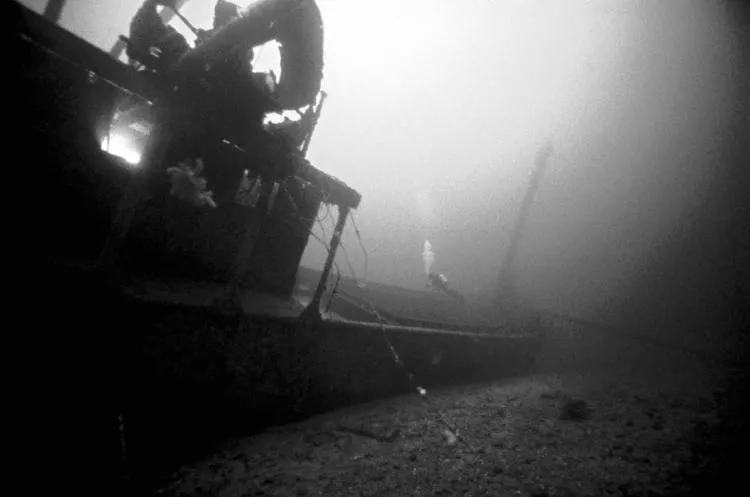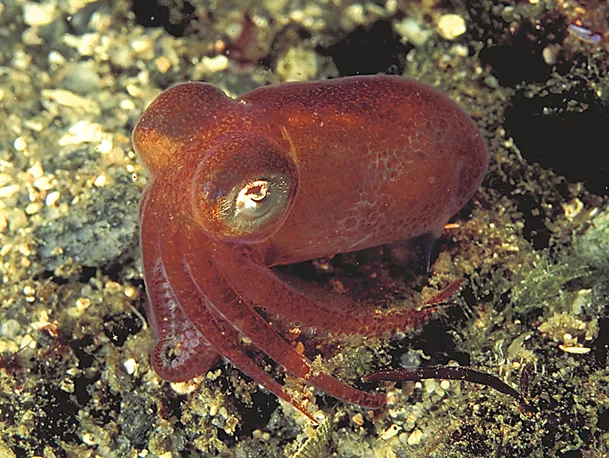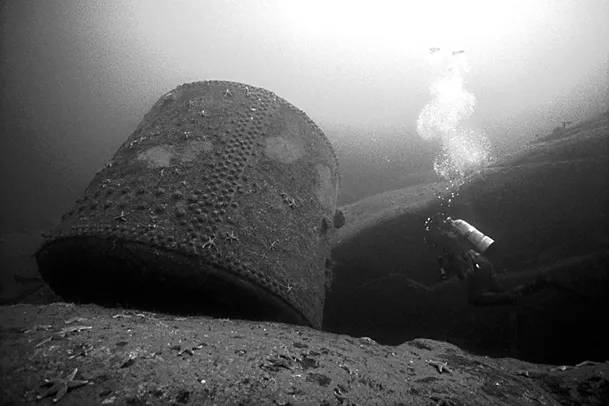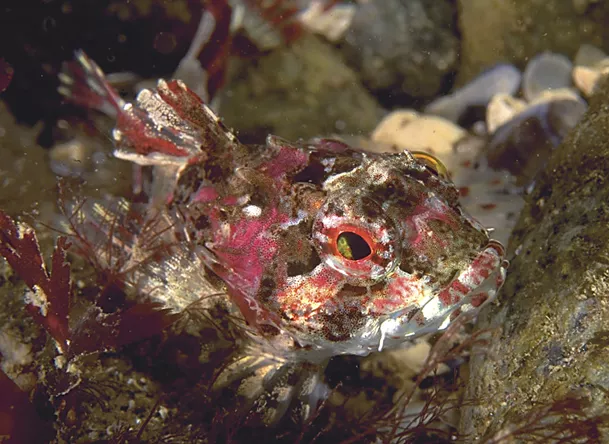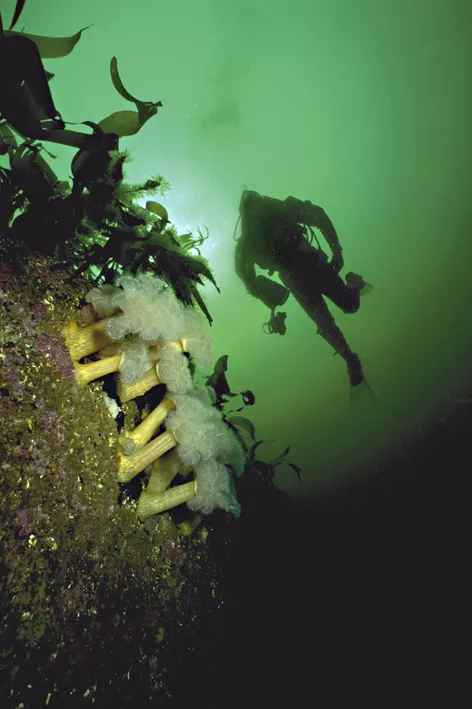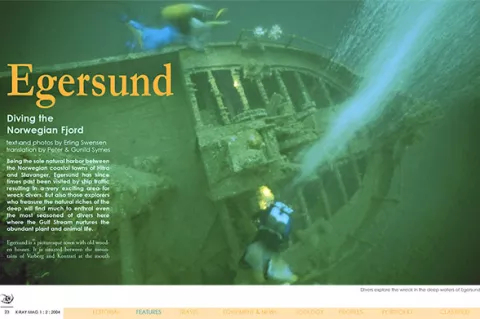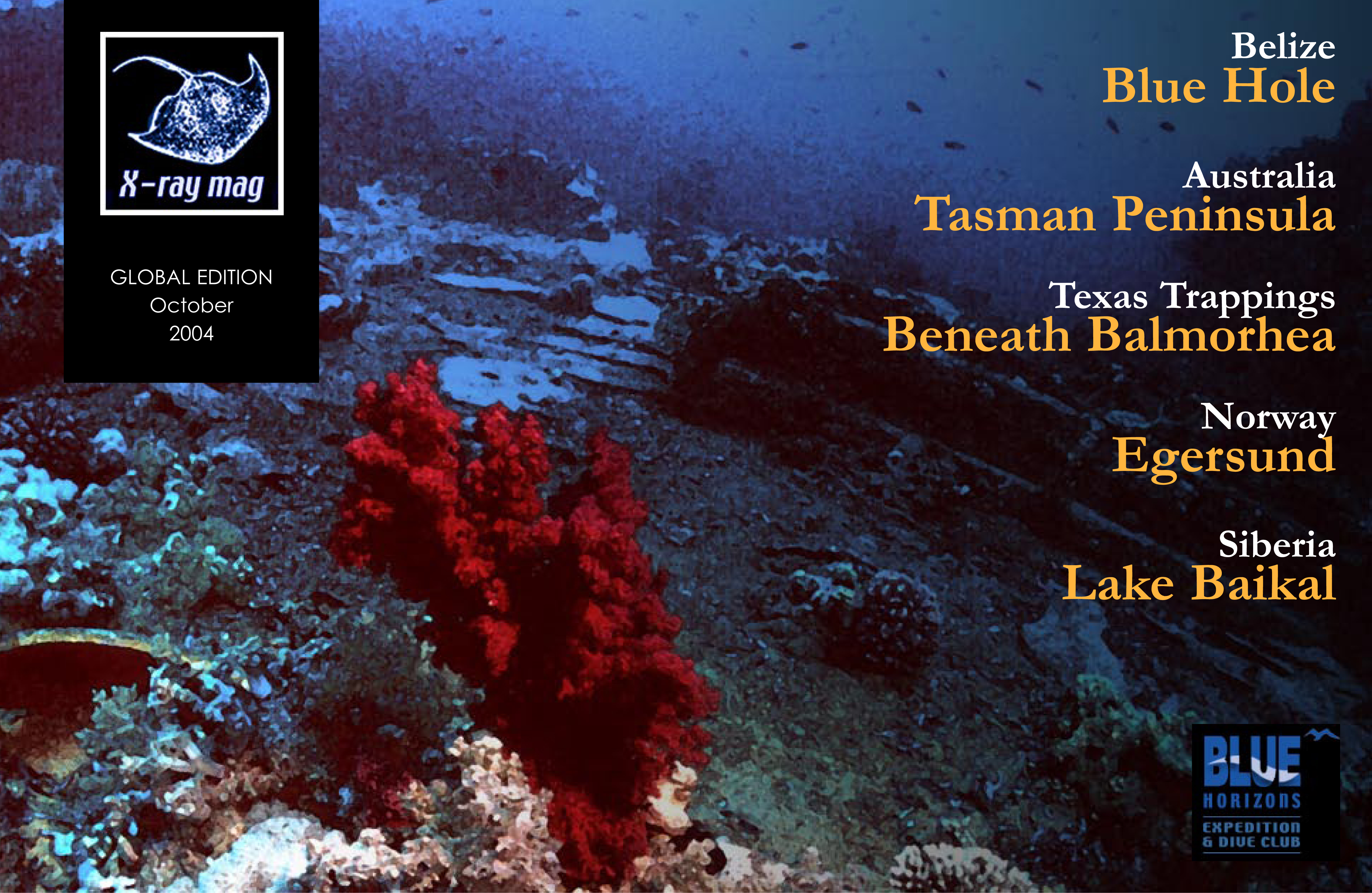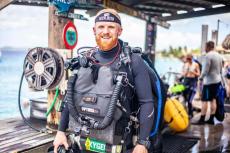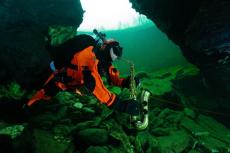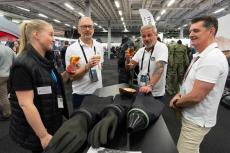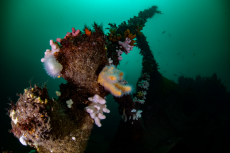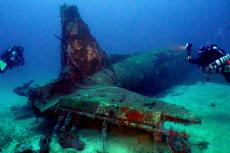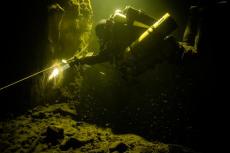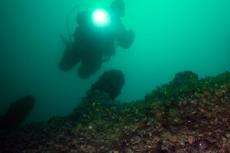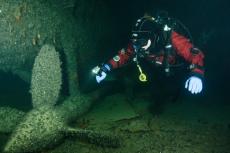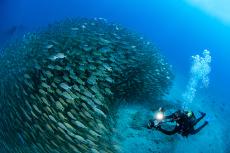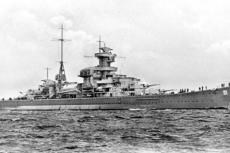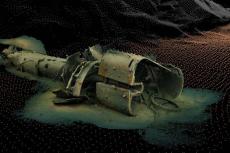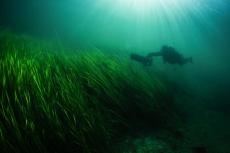Being the sole natural harbor between the Norwegian coastal towns of Hitra and Stavanger, Egersund has since times past been visited by ship traffic resulting in a very exciting area for wreck divers. But also those explorers who treasure the natural riches of the deep will find much to enthral even the most seasoned of divers here where the Gulf Stream nurtures the abundant plant and animal life.
Contributed by
The history of diving in the town began in earnest in the early 1960s when Egersund Frømandsklub [frog man club] was founded. The club folded a couple of years later, but in 1974, Egersund Dykkeklubb [diving club] was founded.
Later, the Octo-pus Dykkeklubb opened its doors at the beginning of the 1980s. These two clubs now conduct their activities in a peaceful coexistence. On land, nature is tough and crude. Below the surface, about the same criteria applies. Here, one can find wall diving, caves, wrecks, kelp forests, fish life and everything else a curious diver may want to see.
The diving in Egersund is simple. The open ocean spreads itself out after only a few minutes’ boat ride through the archipelago. There is a full range of sites to choose from. The visibility is usually excellent, but the wind can shake up the ocean and make for quite a swell. In which case, it is very fortunate that Eigerøy lies where it does. It is always possible to dive on one side of the island or the other. Usually, the winds blow from the northwest or southeast, and in these cases, it is easy to find good diving spots on either the north or south side of the island.
Norske Løve
[Norwegian Lion] In 1666, the joint kingdom of Denmark and Norway joined the war on the side of the Dutch against England. The Danish king sent a group of navy vessels on patrol along the coast to prevent attacks by the English. The flagship was the frigate, Norske Løve, which was also the royal warship. In October, the fleet sought shelter from the autumn storms behind Eigerøy.
During a storm with gale force winds, the frigate tore loose her anchor ropes and drifted towards the coast. She ran aground at Midnesodden and sustained severe damage. The crew was successful in towing the ship into a bay, which was later named the Austre Løvebugt, or eastern Bay of the Lion. Here, the sailors wintered. “Norske Løve” foundered in the bay and was discovered in 1980 by divers from Egersund Dykkeklubb.
One of the cannons was raised. Once it has undergone preservation, the artifact will be offered to the town of Egersund as a gift. If one dives in the bay today, there are only a few traces to be found from this once proud vessel of war. A few cannons, cannonballs and iron rods are the only indications that the tale of the royal frigate is really true.
Shipwrecks
From the time when “Norske Løve” was lost to present day, there were many other ships that wrecked in the area outside Egersund. From the dramatic shipwreck of the proud “Hartlepool” in 1888, where 17 lives were lost, to the “MS Landans" shipwreck in the 1950s, to the “Elgry” and “Hardangerfjord II” wrecks in the 1980s, there are countless possibilities for good wreck dives.
It may prove useful to ask the locals for an exact position, but the best option is to go with some of the local divers. With a base in Egersund, it is also possible to reach the famous wrecks of “Dresden” on the island of Karmøy and “Gudrun” in the nearby Flekkefjord. On sunny days, diving on the tugboat “Argentina” out at Merre is a good choice.
Nature furthest out to sea is the most dramatic and beautiful with vertical gullies, big boulders and incredible fish life – it is absolutely worth a visit. About half a mile to the east beneath Nodland, the war-wreck, “Eros,” can be found. The ship is shattered, but at the depth of 15 meters, one can find anchors and other wreckage. Further in, we find the island of Skarvøy.
There is a wreck here, too. It is a schooner, which was lost in the mid-1800s. The story about this shipwreck is unbelievable. One of two treasure chests of gold was salvaged by the ship’s crew. However, the second chest of gold, the captain and the ship disappeared in the abyss. Today, only two big anchors over three meters long, can be seen lying at a depth of 25 meters. So one day, if you feel lucky, maybe...
Skarvøy
Skarøy is mostly renowned for its fabulous nature. Local fishermen have christened the vertical cliff along the southwest end of the island as the Skarvøyvæggen (The Skarvøy Wall). It is a vertical wall that plunges from 15 meters down to a depth of approximately 50 meters. At 25 meters, there is a large overhang that is covered by sea lilies, sponges, dead man hand coral and sea anemone. On the southern corner, there is a tunnel directly into the rock, and at 3 to 5 meters depth, there are bog hollows at the bottom.
On the west side, there are huge boulders. They start on land and continue under the surface. The growth of attached life is abundant and diverse, and so is the fish life between the rocks. Big ballan wrasses guard their preserves zealously, and scores of small flounders lie on the bottom. Here, there are also lobster, sea eels and crabs.
There is no need to go further out than Skarvøy for good diving. However, a little further to the north, one finds Pelaberget where nature, if possible, is even more impressive. From the surface, the rock face plunges vertically down to meet a large overhang at 20 meters. There is a big boulder here that you can swim under.
Once under the boulder, the cliff is hanging overhead. If the visibility is good, one can experience the sensation of hanging suspended like plankton between the chalk-white bottom 50 meters down and the overhang at 25 meters. A few hundred meters further into the fjord, the island of Lyngøy is situated. Here too, there are good possibilities for excellent wall diving. There are boulders here that fell into the little bay during the Ice Age. They create a roof overhead as divers journey inward along the bottom. The possibilities are rife. The best diving is obtained by boat, but it is also possible to make great dives by car.
Fish and biology
At Egersund, the Gulf Stream sweeps by very closely to the coast. It has a very positive influence on the fish life, which during summer months, can be quite abundant. Especially during the late summer and during the autumn, it is possible to observe diverse fish life and a large number of angler fish. A large amount of coal fish, ling, wrasses and Norwegian pout can be seen here, too. Underwater hunters can find good possibilities to catch local delicacies.
Photographers can enjoy good opportunities to capture dramatic underwater images. Nudibranchs can be seen in large numbers all year round. Even in the fjord under the Eigerøy Bridge, there is an abundance of sea life. There are different species of shells, cockles, conches, mussels and brittle stars as well as smaller animals such as kelp fleas and hermit crabs, which thrive in the current under the bridge.
This site is accessible year round and can be easily reached by car. In the outer parts of the archipelago, the ecology changes dramatically. Divers find all sorts of hydroids and asidians as well as cup corals and feather stars. With careful observation, it is also possible to see rarities such as dogfish or rays. Most of the sites can be reached within 30 minutes by car or boat.
Topside
If you need to gas off, there are plenty of other activities to enjoy. The town has a variety of shops with everything from big supermarkets to cosy pedestrian streets filled with small boutiques. Egersund has a long standing tradition for ceramics. Most connoisseurs will recognise Egersund Fayancefabrik, which closed down in the 1970s.
Today, many of the factory’s products can be purchased at the local terra cotta manufacturer who took over the moulds after the establishment closed its doors. For historical perspectives, the Egersund and Dalana Folk Museum offers a lot of interesting information on the shipping industry, and the 120 year long production history of Fayancen can be seen at Egersund Fayance Museum. The hiking routes outside town have something for everyone.
In 1995, the area around Øglend was designated the most beautiful hiking area in Norway. For scenic routes by car, touring around Lysebotnen is highly recommended. From 1000 meters altitude, the road twists and turns down the mountain side to sea level. The trip may be combined with a dive in the fjord.
For those who like wandering, it is possible, by the same road, to reach “Kjerag.” Here, one will find the famous stone, upon or over which fearless hikers can stand or jump. Under the stone, there is a vertical drop-off of about 1000 meters. Lysefjorden is, after all, mostly known for the rock “Prækestolen,” otherwise known as The Pulpit.
Accommodations and refills
Egersund is situated approximately one hours’ boat trip south of Stavanger. The distance to Oslo is 7-8 hours by car. The town has ferry connections to Denmark all year. The nearest airport is Sola at Stavanger, but it is recommended that divers arrive by car. There are no dive centers in the area, so all diving must be self sustained or assisted by the local dive community, i.e. Egersund Dykkeklubb. The diving season is year round. There is virtually no ice or snow, and visibility is best during the winter months, but can also be excellent during the summer.
Published in
-
X-Ray Mag #1
- Read more about X-Ray Mag #1
- Log in to post comments

